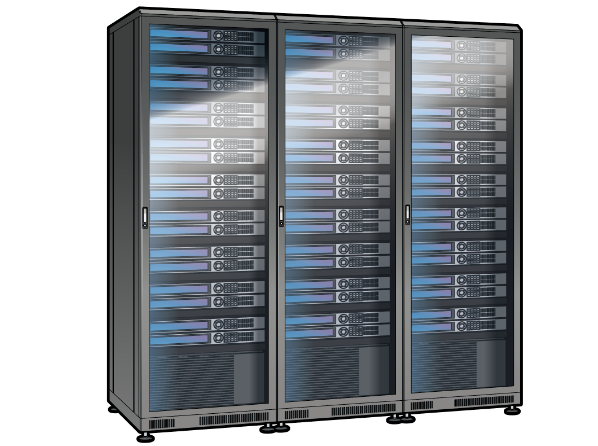



Plating of Hard Disk Drives
Hard disk drives are used to store data on computers.
Plating technology is also applied to this storage media.
In this chapter, we will learn about the plating of hard disk drives.
What is a Hard Disk Drive?
In recent years, there has been an increase in the use of cloud storage (in which data is stored on an external storage device such as a server via the Internet). There are now even some computers emerging that do not have Hard Disk Drives (HDDs). It may be tempting to think that the era of the HDD has ended, but the storage devices used in the cloud themselves are supported by HDDs. HDDs are essential for the handling of large volumes of data.

They are also used in car navigation systems and in the recording devices on televisions. There are still many areas in which HDDs continue to play an important role. Today, HDDs with TB (terabyte*) class capacity are sold at affordable prices. The high level storage capacity previously used for server class can now be used easily at home.
*1TB= Approx. 1,000 GB (gigabytes)
The main reasons for the use of HDDs in PCs and servers are that they have remarkably increased storage capacity, they have become easier to use and they are low cost.

HDDs have a disk-shaped magnetic body (storage medium) that is rotated at high speeds, and the head of which is moved to read and write data. In order to make this reading and writing of data possible, it is necessary to bring the head close to the disk (magnetic body) as it is rotating at high speed. It is easy to imagine how any irregularity on the disk surface would result in contact with the head and cause failure. On the other hand, if the head is not brought close to the disk, then there may be problems in the reading of the data.
The accuracy required of the gap between the rapidly rotating disk and the head can be likened to the accuracy required to fly a jet airplane at several tenths of a millimeter above the runway. This is how flat the surface of the disk must be, and it is plating technology that is used to achieve it.
The storage capacity of HDDs is determined by the amount of storage per single disk (platter) multiplied by the number of disks included. As the accuracy of the plating improves, the amount of storage per disk (platter) increases and so the total storage capacity of the drive increases.

What kinds of plating are used on Hard Disk Drives?
HDDs are made from a large number of components and nickel plating is used on many of them. However, with nickel plating, the purpose of its use will differ depending on where it is used.
As shown below, the various functions of nickel plating are put to use in the construction of an HDD.
- Aluminum disk (surface preparation) [Non-magnetism, smoothness, strength]
- Swing arm/Magnetic head [Non-magnetism, strength]
- Spindle motor [Non-magnetism, lubricity]
- Actuator [Non-magnetism, strength]
- Frame (main body case) [Magnetic shielding, strength, dust-proofing]

Let me introduce a model of surface processing up to the magnetic film formation, with a focus on the plating performed on the HDD.
Pre-treatment process (Zincate treatment)
01Remove the oxide film
The first step in the plating is to perform degreasing
and etching to remove the oxide film on the aluminum.
02Form a zinc substitution layer
The second zinc substitution treatment adds a zinc film
to create a surface to which plating will more easily attach.
Surface preparation (Electroless nickel plating)
03Produce the first plating
Using a type of chemical with a high phosphorus (P) content and
a non-magnetic, smooth film is produced.
Then, a magnetic film is produced (Sputtering).
Produce a magnetic film
04Produce a magnetic film
Using sputtering on the surface, a magnetic film is formed,
which is a type of dry plating.
In this chapter, we have learned about the plating technologies used on HDDs.
In recent years, solid-state drives (SSDs), which have faster read/write speeds, have started to replace HDDs in PCs. However, HDDs, which cost less per unit of storage capacity than SDDs, are still in frequent use in servers, and HDDs are expected to contribute to the advancement of digital transformation into the future. Those HDDs are supported by plating technology.

